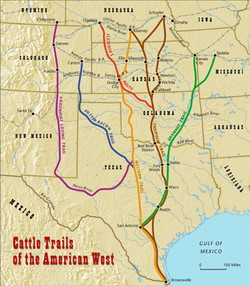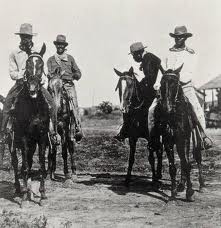The direct links to our digital learning resources:
username:same username you use to access computers at school
password: same password you use to access computers at school
The direct link to the Online Textbook:
user: cobbstudent5
password: password
username:same username you use to access computers at school
password: same password you use to access computers at school
The direct link to the Online Textbook:
user: cobbstudent5
password: password
This Week in Social Studies:
We are studying the Civil Rights Movement. Standards we will be working on for the next few weeks:
SS5H6 Describe the importance of key people, events, and developments between 1950- 1975.
This Week in Social Studies:
We are studying the Civil Rights Movement. Standards we will be working on for the next few weeks:
SS5H6 Describe the importance of key people, events, and developments between 1950- 1975.
We are studying the Civil Rights Movement. Standards we will be working on for the next few weeks:
SS5H6 Describe the importance of key people, events, and developments between 1950- 1975.
a. Analyze the effects of Jim Crow laws and practices.
b. Explain the key events and people of the Civil Rights movement: Brown v. Board of Education (1954), Montgomery Bus Boycott, the March on Washington, Civil Rights Act, Voting Rights Act, and civil rights activities of Thurgood Marshall, Lyndon B. Johnson, Cesar Chavez, Rosa Parks, and Martin Luther King, Jr.
c. Describe the impact on American society of the assassinations of President John F. Kennedy, Robert F. Kennedy, and Martin Luther King, Jr.
d. Discuss the significance of the technologies of television and space exploration.
GPB Civil Rights Virtual Museum
Assignment Directions: Virtual Museum Directions.pptx
GPB Civil Rights Virtual Museum
Assignment Directions: Virtual Museum Directions.pptx
Step 2: Watch School Segregation: Brown v. Board of Education- video below.
Step 3: Click to open your class link and summarize the video in 6 words to create your Six Word Summary.
-------------------------------------------------------------------------------------------------------------------------------
Step 2: Watch School Segregation: Brown v. Board of Education- video below.
Step 3: Click to open your class link and summarize the video in 6 words to create your Six Word Summary.
-------------------------------------------------------------------------------------------------------------------------------
https://www.history.com/topics/cold-war/cuban-missile-crisis
DLD 3/26 and 3/27 Complete in Steps
Step 1: Cold War Proxy Wars Slideshow
https://www.flocabulary.com/unit/cold-war/video/ - login to O365 to see full video
_________________________________________________________________________________
Click Here to download an additional copy of the Project Rubric
Select the Choice Board on the right to enlarge.
Changing Roles of African-Americans during WWII
https://www.history.com/topics/world-war-ii/tuskegee-airmen
https://www.redtail.org/the-tuskegee-airmen/
https://www.flocabulary.com/unit/jim-crow/
https://www.ducksters.com/history/world_war_ii/african_americans_in_ww2.php
Changing Role of Women during WWII
https://www.nationalww2museum.org/students-teachers/student-resources/research-starters/women-wwii
https://www.khanacademy.org/humanities/us-history/rise-to-world-power/us-wwii/a/american-women-and-world-war-ii
https://www.flocabulary.com/unit/womens-rights/
https://www.ducksters.com/history/world_war_ii/us_women_in_ww2.php
Map Skills Review PowerPoint
https://www.flocabulary.com/unit/map-skills/ -Log in using your O365 user and password
https://www.dkfindout.com/us/history/world-war-ii/
Holocaust Museum Panels PowerPoint
Georgia Journeys: Legacies of WWII
Courtesy of The Museum of History and Holocaust Education.
Click on the names below to see interviews on some of the people you learned about in class.
United States Holocaust Memorial Museum
SS5H3 Explain how the Great Depression and New Deal affected the lives of millions of
Americans.
a. Discuss the Stock Market Crash of 1929, Herbert Hoover, Franklin Roosevelt, the Dust
Bowl, and soup kitchens.
b. Analyze the main features of the New Deal; include the significance of the Civilian
Conservation Corps, Works Progress Administration, and the Tennessee Valley Authority.
c. Discuss important cultural elements of the 1930s; include Duke Ellington, Margaret
Mitchell, and Jesse Owens
Watch this video for some extra help understanding Credit - how did this lead to the Stock Market Crash?
SS5H2 Describe U.S. involvement in World War I and post-World War I America.
b. Describe the cultural developments and individual contributions in the 1920s of the Jazz
Age (Louis Armstrong), the Harlem Renaissance (Langston Hughes), baseball (Babe Ruth),
the automobile (Henry Ford), and transatlantic flight (Charles Lindbergh).
Aviation with Earhart and Lindbergh revolutionized travel and transportation of goods around the world.
Cultural Contributions of the African American community have molded popular culture, even as we know it today. This largely began in the 1920s with the Harlem Renaissance. Louis Armstrong's fame helped to break barriers and push back against racial prejudice and discrimination for artists.
Henry Ford gets started/ Henry Ford and the Assembly Line
Overview of the 1920s
SS5H2 Describe U.S. involvement in World War I and post-World War I America.
a. Explain how German attacks on U.S. shipping during the war in Europe (1914-1917) ultimately led the U.S. to join the fight against Germany; include the sinking of the Lusitania and concerns over safety of U.S. ships, U.S. contributions to the war, and the impact of the Treaty of Versailles in 1919.
Propaganda Posters WWI
Songs from World War One:
Goodbye Broadway, Hello France
Oh, How I Hate to Get Up in the Morning!
Over There
SS5H1 Describe how life changed in America at the turn of the century.
a. Describe the role of the cattle trails in the late 19th century; include the Black Cowboys of Texas, the Great Western Cattle Trail, and the Chisholm Trail.
b. Describe the impact on American life of the Wright brothers (flight), George Washington Carver (science), Alexander Graham Bell (communication), and Thomas Edison (electricity).
c. Explain how William McKinley and Theodore Roosevelt expanded America’s role in the world; include the Spanish-American War and the building of the Panama Canal.
d. Describe the reasons people immigrated to the United States, from where they emigrated, and where they settled.
Building the Panama Canal
William McKinley Bio
https://quizlet.com/110613133/5th-grade-panama-canal-spanish-american-war-flash-cards/
https://kids.britannica.com/kids/article/Spanish-American-War/390090
Click here for a Google Earth view of the Panama Canal!
WebQuest Link-
http://teacher.scholastic.com/activities/immigration/tour/
PowerPoint Used in Class - Immigration Experience
Inventor Video Links:
Cattle Trails 1860-1896

The Chisholm Trail and the Great Western Cattle Trail were two famous cattle trails which started in Texas, where the cattle were gathered, and ended in Kansas and Nebraska where the railheads were. A railhead is an end point, or final station for a railroad.
- People in the eastern United States started eating more beef in the late 1800s. This meant that ranchers needed a way to get the cattle from the ranches in Texas, to the east. Texas didn't have any railroads at this time, so cowboys had to take the cattle north to where the cattle could be loaded on the railroad cars.
- Cattle sold at higher prices in the Northeast, so farmers took their cattle on cattle drives to the railheads and then shipped the cattle to the North and Northeast in order to make more money. There, they could make ten times what they would make in the south.
- The Black Cowboy

- Many slaves brought into the United States came from African countries such as Ghana and Gambia, which were known for herding cattle. Some slave owners in the Southern U.S. were interested in these skilled herders and used their talents to keep track of the livestock on plantations.
- After the Civil War, slavery was abolished, or ended. Many former-slaves left the South and became mounted cowboys, moving cattle along trails or cowhands on cattle ranches so they would not have to sharecrop.
- From 1886 to 1896, millions of cattle were driven down the cattle trails by approximately 35,000 cowboys of which 5,000 to 8,000 were black. Black cowboys brought many skills to the table as herders and contributed much to the cattle industry and the settling of the West.
- Black cowboys rode out of Texas along the Chisholm, Western, Goodnight-Loving and other trails in cattle drives to Kansas, the Dakotas, Colorado and Wyoming, usually taking approximately three months to reach their destination.
- Black, white, brown and red cowboys lived, ate and slept together when herding cattle. Due to the dangers and hardships experienced in their lifestyles, they trusted and depended on each other to get the job done. Prejudice was less common on the cattle trails than in the south, where there were Black Codes and other racist laws.
- For more info visit: https://invdd1.weebly.com/introduction.html
Nearpod on Supply and Demand: https://share.nearpod.com/1Iyt9V3ZOZ
GA Standards Video- Cattle Trails
____________________________________________________________________________________
Social Studies Games
_____________________________________________________________________
_____________________________________________________________________
Any content we have already covered will be saved and remain on the blog below the bold line so that you can review the resources, videos and information whenever you would like. Enjoy!
 |
| Use this to study. See link below. |
Study Guide for the Bill of Rights/ Amendments Test
Quiz yourself using Quizizz- https://join.quizizz.com
Flashcards can be printed too! https://quizlet.com/_6yoqjj
Flashcards can be printed too! https://quizlet.com/_6yoqjj







